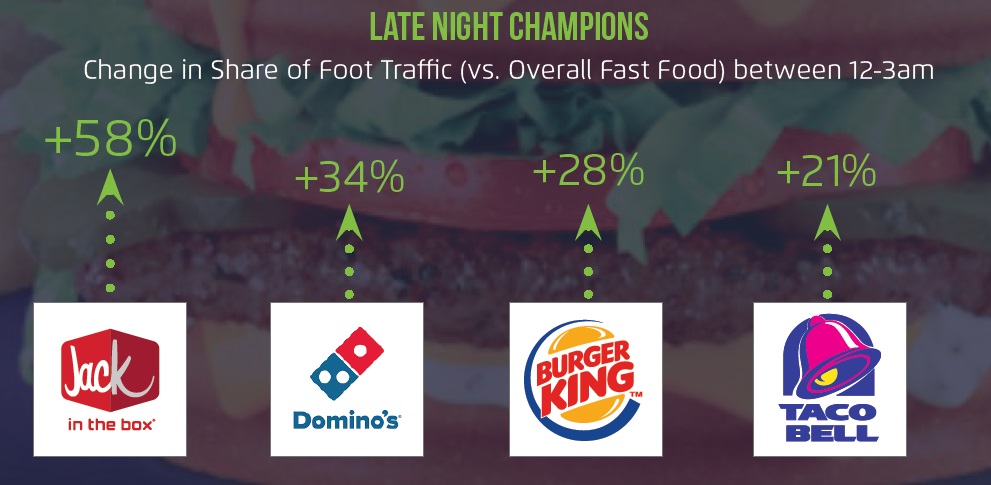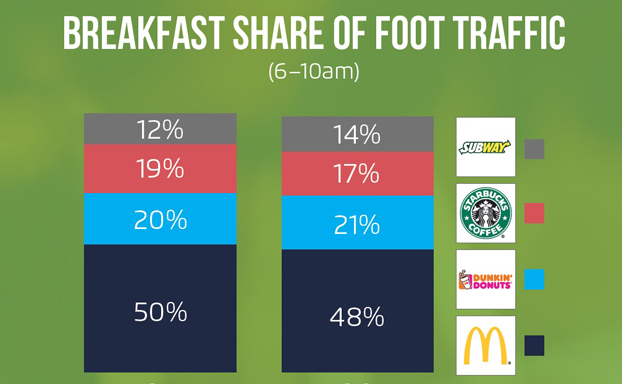Location data are increasingly revealing customer behaviors and how marketing campaigns impact foot traffic at retail stores and restaurants. From knowing the brick and mortar locations that Pokémon Go users frequent, to telling “location stories,” mobile marketing platforms are bringing the power of location intelligence to the broader market.
The latest insights come from xAd’s new report, “Quick Service Restaurants Foot Traffic Trends Q2 2016.” I found one of the most interesting and compelling insights related to the battle for morning and late night foot traffic among restaurants.
These restaurants are developing campaigns to help them capitalize on morning and late night demand. For example, you may have noticed (or heard on the radio) that Subway has upped its breakfast promotions and Taco Bell its late night messaging. But how exactly has this impacted foot traffic?
According to the xAd study, Subway saw a 4% increase in breakfast (6-10am) foot traffic share compared to Q1. While a step in the right direction, McDonalds continues to dominate breakfast foot traffic share.
As Subway attempts to grow breakfast-goers with deals and promotions, foot traffic is highest around lunch. The data shows that Subway’s foot traffic peaks around noon, suggesting its business may be better suited to win lunchtime foot traffic share from competitors.

For late night foot traffic, Taco Bell saw a 21% increase in late night share. Jack in the Box, however, saw an almost 60% increase in share compared to Q1. The study attributes this to their “Munchie Meal” which is only available between 9 pm and 5 am. The restaurant also creates a “club-like” in-store atmosphere during late night hours which may also be aiding in its late night growth.
While location data by itself can be useful, adding contextual information (e.g., time of day) enables retailers and brands to better understand how their marketing is impacting foot traffic and whether it’s working.



